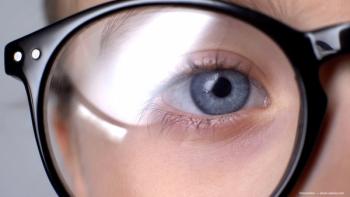
Distance between posterior IOL surface, anterior lens surface maintained
A study of a subgroup of 11 patients who participated in a multicenter trial found no significant distance changes between the anterior crystalline lens surface of the eye and the posterior surface of iris claw-style phakic IOLs during accommodation. This finding lends further credence to the belief that the IOL and the iris move forward together as a unit during accommodation.
Key Points
The findings of this study lend further credence to the belief that the IOL and the iris move forward together as a unit during accommodation.
"We observed a statistically significant diminution of the distance between the anterior part of the phakic IOL and the endothelium during accommodation but no changes between the posterior part of the IOL and the anterior crystalline lens," said Dr. Güell. "There is a reduction in anterior chamber depth, but it does not affect the distance between the anterior crystalline lens and the phakic IOL for iris claw lenses."
In addition to a 3-year follow-up on their clinical and refractive data, all patients were evaluated using anterior-segment optical coherence tomography ([OCT]; Visante, Carl Zeiss Meditec) at different 0.5-D steps in their entire range of accommodation.
Central anterior chamber depth, endothelium-anterior IOL surface distance, and crystalline lens anterior surface/posterior IOL surface distance were measured. OCT was performed 20 to 36 months postoperatively in all cases.
Anterior chamber depth was found to be slightly reduced (mean, 180 μm; range, 50 to 260 μm) during full accommodation in both myopic and hyperopic eyes. This reduction is directly related to the difference between the endothelium and the anterior phakic IOL surface, because the crystalline lens anterior surface and the posterior phakic IOL surface distance is unchanged, Dr. Güell said.
"Basically, we studied three parameters and observed a clear and constant diminution of pupil size, a slight diminution between the endothelium and the anterior part of the lens, and almost no reduction in the distance between the posterior part of the IOL and the posterior part of the lens," he said. "This held true both for the . . . PMMA [IOL] and the . . . silicone lens."
Only minor changes were observed during accommodation: a linear, progressive, small reduction in anterior chamber depth and pupil diameter. The changes were statistically significant in both groups, but no differences between the two IOLs were seen.
Commenting on the fact that no changes were observed in the distance between the anterior crystalline lens surface and the posterior IOL surface, Dr. Güell said, "We postulate that, possibly, the iris-crystalline lens complex moves slightly forward during accommodation, and the IOL moves together with the iris."
"We also evaluated-although not in a prospective manner-our toric and hyperopic cases, and the results were exactly the same: reduction in anterior chamber depth but no diminution of distance between the crystalline lens and the IOL," he added.
Although the results provide compelling evidence that the iris-crystalline lens complex moves forward during accommodation and the IOL moves together with the iris, more studies are needed to analyze variables such as age and axial length, as well as other types of implants, such as angle-supported and hyperopic IOLs, according to Dr. Güell, who added that such research is under way.
One indisputable conclusion arises, however, he said: "Pre-and postoperative anatomic evaluation of the anterior segment of the eye has become mandatory for phakic IOL implantation."
Newsletter
Don’t miss out—get Ophthalmology Times updates on the latest clinical advancements and expert interviews, straight to your inbox.



















































.png)


